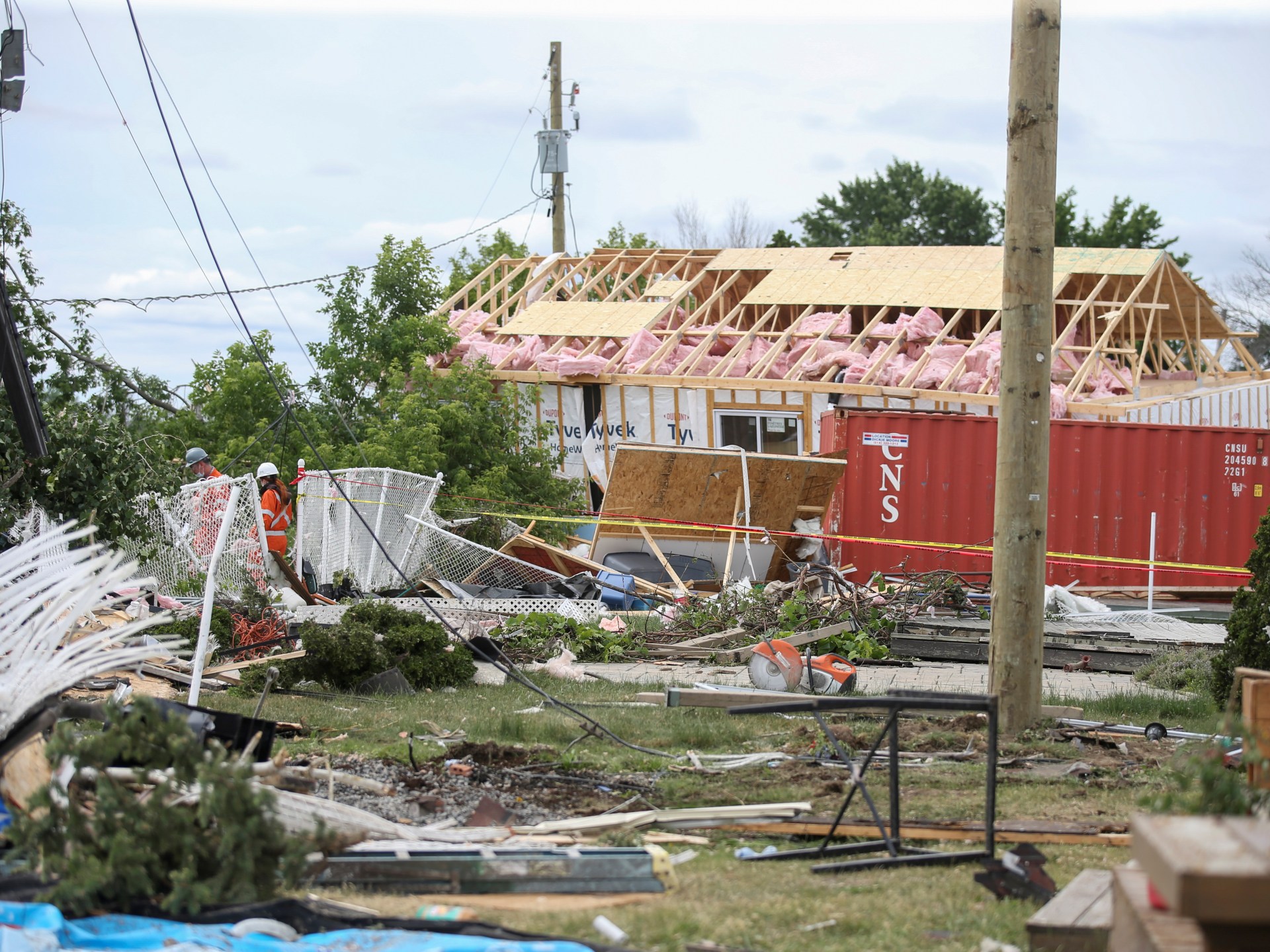During the past few hours, several countries and regions experienced the impact of storms and hurricanes, which left missing persons and material losses, and caused the evacuation of hundreds of homes and the cancellation of flights.
Tropical Storm Fiona - which has been downgraded from a hurricane - headed towards northern Canada on Sunday as it continues to lose strength gradually, after hitting the eastern coasts of the country, causing the loss of a woman and cutting power to more than 500,000 homes.
Canadian Emergencies Minister Bill Blair said that the scale of damage caused by the powerful storm that swept the Canadian coast since Saturday is unprecedented, and it will take months to rebuild vital infrastructure that was destroyed.
Storm Hermine also reached the coast of the Spanish Canary Islands, accompanied by heavy rain, causing the cancellation of flights to this tourist area.
Spanish airport operator Aina said flights were canceled across many islands, including 34 from Tenerife North, 22 from La Palma, 14 from Ilhero, 8 from Lanzarote and 4 from La Gomera.
Spain's National Meteorological Agency (EMET) issued a red weather warning for the islands of Gran Canaria, La Palma and El Hiro from midday to midnight on Sunday.
The island authorities also ordered the closure of schools tomorrow, Monday, as a precautionary measure.
The region's governor, Angel Victor Torres, said - in a press conference - that the storm is expected to move to the closest distance from the islands between 11 pm on Sunday and 11 am on Monday.
Filipinos at a shelter in Manila in preparation for Typhoon Noro (Reuters)
Cyclone Noru
On the other hand, the powerful typhoon Noro hit the Philippine island of Luzon on Sunday, which is densely populated, accompanied by strong winds and torrential rains, forcing hundreds of residents to evacuate their homes.
Hurricane Noro was loaded with strong winds of up to 195 kilometers per hour, and "the intensity increased significantly" and was unprecedented, according to the government meteorological observatory.
"We are asking residents residing in dangerous areas to abide by evacuation orders when necessary," said a statement from PNP Commander-in-Chief Rodolfo Azurin.
The typhoon hit an area about 100 km northeast of Manila, where relief workers are bracing for possible strong winds and torrential rain that could hit the city of more than 13 million people.
Forced evictions have been carried out for residents of the "most vulnerable" areas within the capital, Philippine officials said.
Romulo Kabantak, regional director of the Civil Defense Service, said the metropolitan area was "prepared...we are waiting and hopefully" the cyclone won't hit us.
Cyclone Noru came 9 months after a powerful cyclone devastated parts of the country, killing more than 400 people and leaving hundreds of thousands homeless.
In Vietnam, a local official said the typhoon was expected to bring heavy rains to the coffee-growing region in the country's central highlands, known as the "coffee belt", and possibly harm early or near-ripening fruit trees.
And the Bloomberg News Agency reported on Sunday, quoting the director of the Dak Lak County Weather Forecast Center, Dang Van Shin, as saying that the level of rain in some areas is expected to reach 600 millimeters.

